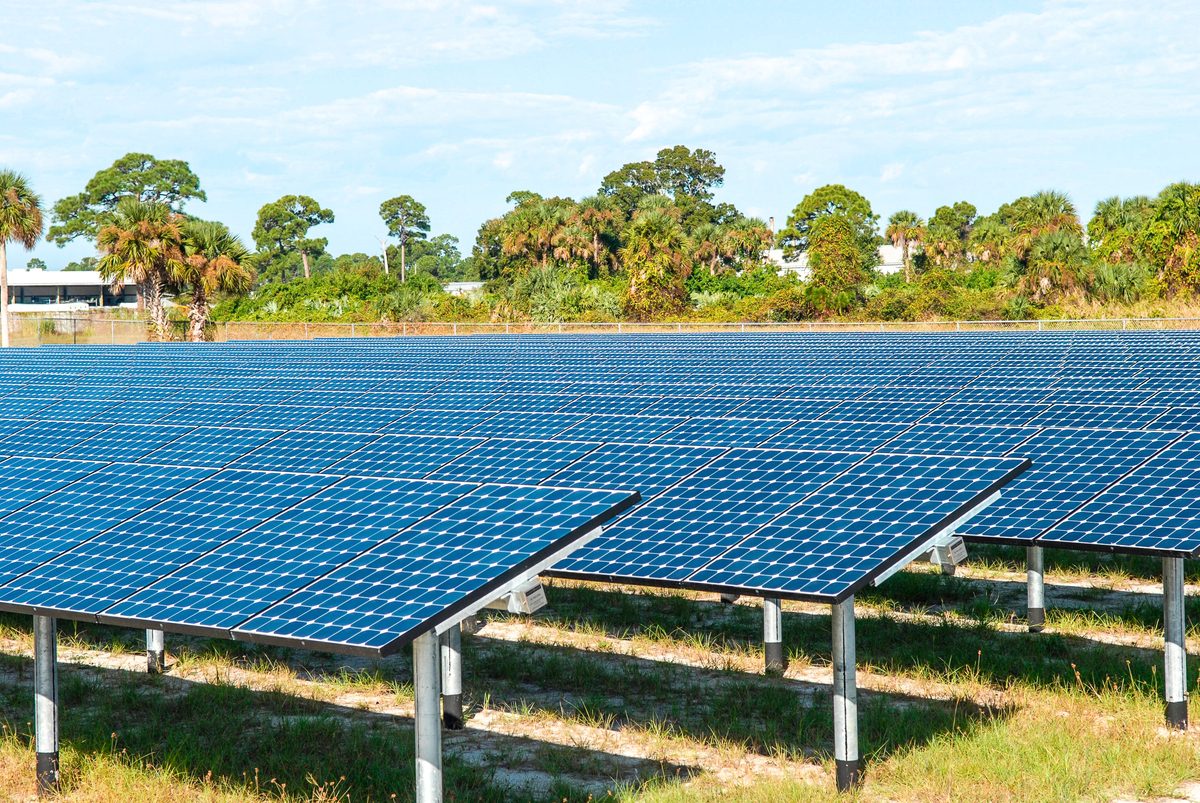Florida, the Sunshine State, conjures images of endless beaches, vibrant cities, and lush natural landscapes. For anyone planning a visit, understanding the local climate is paramount, and a key piece of the puzzle is the florida average temperature by year. While monthly averages give a snapshot, looking at temperature trends and variations year-to-year provides crucial context for planning the perfect trip, whether you’re seeking scorching summer sun, mild winter escapes, or anything in between. As an expert in weaving together travel, culture, and climate, I can tell you that temperature doesn’t just affect what you pack; it shapes experiences, influences local life, and connects to the very history and culture of this unique state.
Understanding Florida’s Climate: More Than Just Monthly Averages
Florida’s climate is broadly classified as humid subtropical in the northern and central parts and tropical in the southern part, including the Florida Keys. This means high temperatures, significant humidity, and distinct wet and dry seasons are common characteristics. While the source provides average monthly temperatures, which are incredibly useful for understanding typical seasonal patterns, the reality is that temperatures, rainfall, and overall weather can fluctuate from one year to the next. Exploring the florida average temperature by year concept helps us appreciate these variations and prepare for potential differences during a specific travel year.

Florida is a large state, stretching from the border of Georgia and Alabama down to the Caribbean Sea. This geographical expanse contributes significantly to regional climate variations. Northern Florida experiences cooler winters and more pronounced seasonal changes than South Florida, which maintains a warm, almost tropical climate year-round. Understanding the overall average is a starting point, but delving into how these averages behave annually provides a richer picture for the savvy traveler.
Deciphering Florida Average Temperature by Year
When we talk about the florida average temperature by year, we’re looking at how the mean temperature for the entire state, or specific regions within it, changes from one calendar year to the next. Several factors contribute to these annual variations. Global climate patterns like El Niño and La Niña can significantly influence temperature and precipitation across the United States, including Florida. A strong El Niño year, for instance, might bring cooler, wetter conditions to Florida during the winter months compared to a neutral or La Niña year.
Furthermore, the broader trends of climate change are impacting average temperatures over longer periods. Scientific data indicates a general warming trend globally, and Florida is not immune. This means that while monthly averages provide historical context, the actual temperature in any given year might be slightly higher or lower than the long-term average, and understanding the potential for warmer-than-average years is becoming increasingly relevant for travelers and residents alike. Analyzing historical data and consulting climate outlooks are valuable steps for anyone interested in the nuances of florida average temperature by year.
A typical representation of average monthly temperatures in Florida, showing the seasonal swing that contributes to the overall florida average temperature by year.
A Deep Dive into Monthly Averages: What the Data Tells Us
The provided data highlights the extremes: July as the hottest month and January as the coldest. Let’s expand on what this means for each season, incorporating both the averages and the potential for annual variability reflected in the florida average temperature by year.

More:
Original public domain image from Library of Congress
Summer (June – August): The Peak of Heat and Humidity
July holds the title for the hottest month with an average temperature of 28°C (82°F). This period is characterized by intense heat, high humidity, and frequent afternoon thunderstorms. While the average gives you a benchmark, some years might see extended heatwaves pushing daily temperatures even higher. The high humidity makes the “feels like” temperature significantly warmer than the actual reading. This is the time for water activities, air-conditioned indoor attractions, and planning outdoor excursions for early mornings or late afternoons.
Fall (September – November): Transition and Hurricane Season
September and October are still very warm, gradually cooling down as November approaches. This period also coincides with the peak of the Atlantic hurricane season, which can dramatically impact temperatures and weather patterns in any given year. While average temperatures begin to drop, the potential for disruptive tropical systems adds a layer of unpredictability to the florida average temperature by year for this specific period. Late fall offers some of the most pleasant weather in North and Central Florida.
Winter (December – February): Mild and Pleasant
January is the coldest month, averaging 16°C (61°F). This is the most popular time to visit for many, especially those escaping colder northern climates. South Florida remains comfortably warm, while North Florida can experience occasional cold snaps, sometimes even dropping below freezing overnight. The florida average temperature by year during winter can be influenced by large-scale climate patterns; for example, a strong La Niña might lead to warmer, drier winters. Overall, this season offers ideal conditions for exploring outdoors, visiting theme parks with fewer crowds (outside of holidays), and enjoying the mild weather.
Illustrating the difference between average high and low temperatures throughout the year in Florida, a key component contributing to the overall annual average.
Spring (March – May): Warming Up and Popular Travel Time
Spring sees temperatures steadily rise, moving from mild to warm. March and April offer beautiful, comfortable weather before the intense summer heat sets in. May starts to feel much warmer, especially in the southern parts of the state. This is a prime travel season, offering a great balance of pleasant temperatures and fewer crowds than peak winter or summer holidays. The florida average temperature by year in spring is generally reliable, though some years might see an earlier or later onset of summer-like heat.
Regional Temperature Differences Across Florida
It’s vital to remember that Florida is geographically diverse, and temperatures vary significantly from north to south. The Panhandle and North Florida have a climate closer to the southeastern U.S., with more distinct four seasons and cooler winters. Central Florida, home to major theme parks, represents a transition zone. South Florida and the Keys have a true tropical climate, meaning less temperature variation throughout the year, warmer winters, and consistently high humidity.
Discover the Must-See Things to See in Orlando Florida
Unforgettable Winter Activities in Michigan
Discover the Top Restaurants in Denver – A Culinary Journey

More:
Original public domain image from Library of Congress
When researching florida average temperature by year, it’s beneficial to look at data specific to the region you plan to visit. Averages for Miami will be significantly different from those for Tallahassee or Orlando. This regional variation allows travelers to find a climate that suits their preferences regardless of the time of year, by choosing their destination within the state strategically.
The Impact of Florida’s Temperature on Travel & Experiences
Temperature and humidity are central to the Florida travel experience. High summer temperatures make beach days glorious but require staying hydrated and seeking shade. Theme park visits are best managed with breaks in air conditioning and focusing on early morning or late evening hours. Winter’s mild temperatures are perfect for exploring natural parks, fishing, golfing, or simply strolling without breaking a sweat.
Understanding the typical seasonal temperatures, along with the potential for variation highlighted by looking at the florida average temperature by year, helps travelers pack appropriately, plan outdoor activities safely, and choose the best time to visit based on their heat tolerance and desired experiences.
Average daily sunshine hours in Florida throughout the year, an important factor alongside temperature for planning outdoor activities.
Beyond the Thermometer: Climate’s Role in Florida’s Culture and History
Florida’s climate has profoundly shaped its development, culture, and even its cuisine. The long, hot summers and mild winters made agriculture, particularly citrus farming, a cornerstone of the state’s economy for generations. The challenge of building in a humid, hurricane-prone environment influenced architectural styles, leading to features like elevated homes, wide porches, and later, widespread air conditioning which revolutionized modern life in the state.
Historically, Florida’s climate dictated settlement patterns and the pace of life. Even today, outdoor activities are central to Florida’s identity, from water sports to festivals, many of which are scheduled during the cooler months. Understanding florida average temperature by year in a historical context helps us appreciate the ingenuity of those who settled here and the resilience of communities facing challenging weather patterns. The climate isn’t just a backdrop; it’s a character in Florida’s story.
Understanding Climate Data Definitions
To fully grasp concepts like florida average temperature by year and monthly averages, it helps to understand how these measurements are derived.
- Average Temperature: This is typically calculated for a given period (month, year, or longer) by averaging the daily average temperatures. A daily average temperature is often the mean of the daily high and low temperatures.
- Average High/Low Temperature: These figures represent the mean of the highest and lowest temperatures recorded each day over a specific period, divided by the number of days.
- Average Daily Sunshine Hours: Measured using specialized equipment, this is the total number of hours the sun shines in a month, divided by the number of days in that month. July, with 10 hours, boasts the most sunshine in Florida according to the source data.
- Average Sea Temperature: Taken from various sources including buoys and satellites, this is the average temperature of the sea surface over a period. Warmer sea temperatures, like the 29°C (84°F) average in July, are perfect for swimming and indicate favorable conditions for marine life and activities.
Depicting average sea temperatures around Florida, crucial data for swimmers, boaters, and marine life enthusiasts.
Conclusion
While checking the typical monthly averages is essential for planning a trip to Florida, gaining an appreciation for the florida average temperature by year concept adds valuable depth. It highlights the dynamic nature of climate and prepares travelers for the potential variations that can occur. Whether you’re chasing the sun, exploring historical sites, indulging in fresh seafood, or enjoying outdoor adventures, understanding Florida’s temperature patterns – both the averages and the annual nuances – ensures a more comfortable, enjoyable, and enriching experience. So, pack accordingly, stay hydrated, and get ready to experience the vibrant energy of the Sunshine State, tempered by its ever-changing climate.
FAQ
Q: What is the hottest month in Florida?
A: Based on average temperatures, July is typically the hottest month in Florida.
Q: What is the coldest month in Florida?
A: Based on average temperatures, January is typically the coldest month in Florida.
Q: How does the average temperature in North Florida compare to South Florida?
A: North Florida generally has cooler winters and more pronounced seasonal changes compared to South Florida, which has a warmer, more tropical climate year-round.
Q: Why is understanding florida average temperature by year important?
A: Looking at florida average temperature by year helps travelers understand that temperatures can vary from the long-term monthly averages due to factors like climate patterns and climate change, aiding in more realistic planning.
Q: When is the best time to visit Florida for mild temperatures?
A: The period from December to April generally offers the mildest and most comfortable temperatures across much of the state, particularly in South and Central Florida.

